Quick highlights:
- Fungal Fighter: Pyrithione zinc is a globally recognized antifungal agent.
- Targets Malassezia: It combats malassezia yeast, a common culprit in skin problems.
- Symptom Relief: Regular use can ease symptoms, but addressing skin barrier health is also key.
- Product Variety: Not all soaps are created equal – learn what to look for in ingredients.
This guide will equip you with a comprehensive understanding of zinc pyrithione soap, from its science-backed benefits to practical product reviews. Let’s explore how this soap can be a game-changer for your skin health.
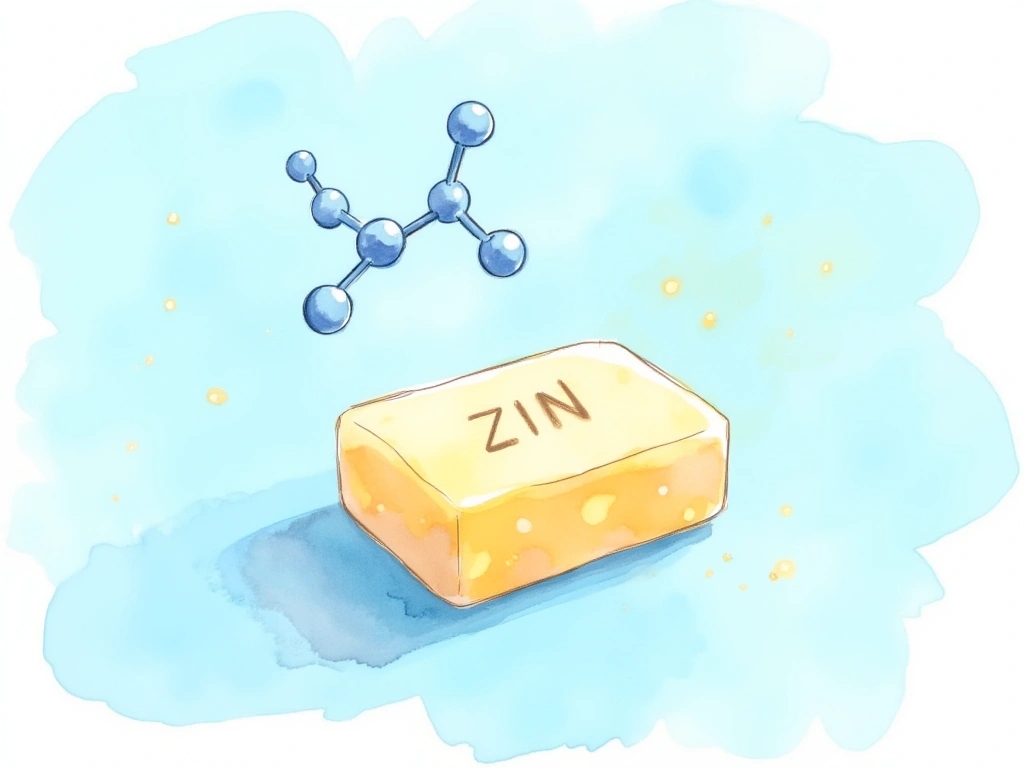
Understanding Zinc Pyrithione Soap
Zinc pyrithione soap harnesses the power of pyrithione zinc, a potent antifungal agent. It’s widely recognized for its effectiveness in treating various skin conditions, particularly those linked to fungal overgrowth. Its claim to fame? Suppressing malassezia fungus, often implicated in common skin issues.
Notably, pyrithione zinc is a well-established treatment for dandruff and seborrheic dermatitis. You’ll often find it as a star ingredient in many anti-dandruff shampoos, including household names like Head and Shoulders.
What is malassezia?
Malassezia is a type of lipophilic yeast (fungus) naturally found on the skin. However, overgrowth can contribute to conditions like seborrheic dermatitis (dandruff), tinea versicolor, and pityriasis versicolor.
This section will give you a concise overview of how pyrithione zinc soap works to alleviate seborrheic dermatitis and similar skin concerns. For a deeper scientific dive into pyrithione zinc, check out this article.
The Link Between Malassezia and Seborrheic Dermatitis
Seborrheic dermatitis, commonly known as dandruff, is a prevalent skin condition often linked to malassezia. Understanding this connection is key to appreciating how pyrithione zinc soap provides relief.
While the exact mechanisms are still being researched, a general understanding is forming.
Key factors to consider:
- Sebum and Location: Seborrheic dermatitis often appears in areas with high sebaceous gland activity (oil production).
- Malassezia’s Role: Malassezia yeast thrives on skin oils and is present on everyone’s skin, both healthy and affected.
- Irritating Byproducts: It’s not malassezia itself, but the oleic free fatty acids it produces that seem to trigger skin reactions in susceptible individuals.
- Oleic Acid Irritation: Oleic free fatty acids alone can cause seborrheic dermatitis symptoms, even without malassezia.
- Reducing Irritation: Minimizing oleic free fatty acids, often by controlling malassezia, can help avoid irritation.
How Pyrithione Zinc Gets to Work
Discovered in the 1960s, pyrithione zinc quickly demonstrated its antifungal prowess against a wide range of fungi. Its ability to specifically target and suppress malassezia became particularly valuable for skin health.
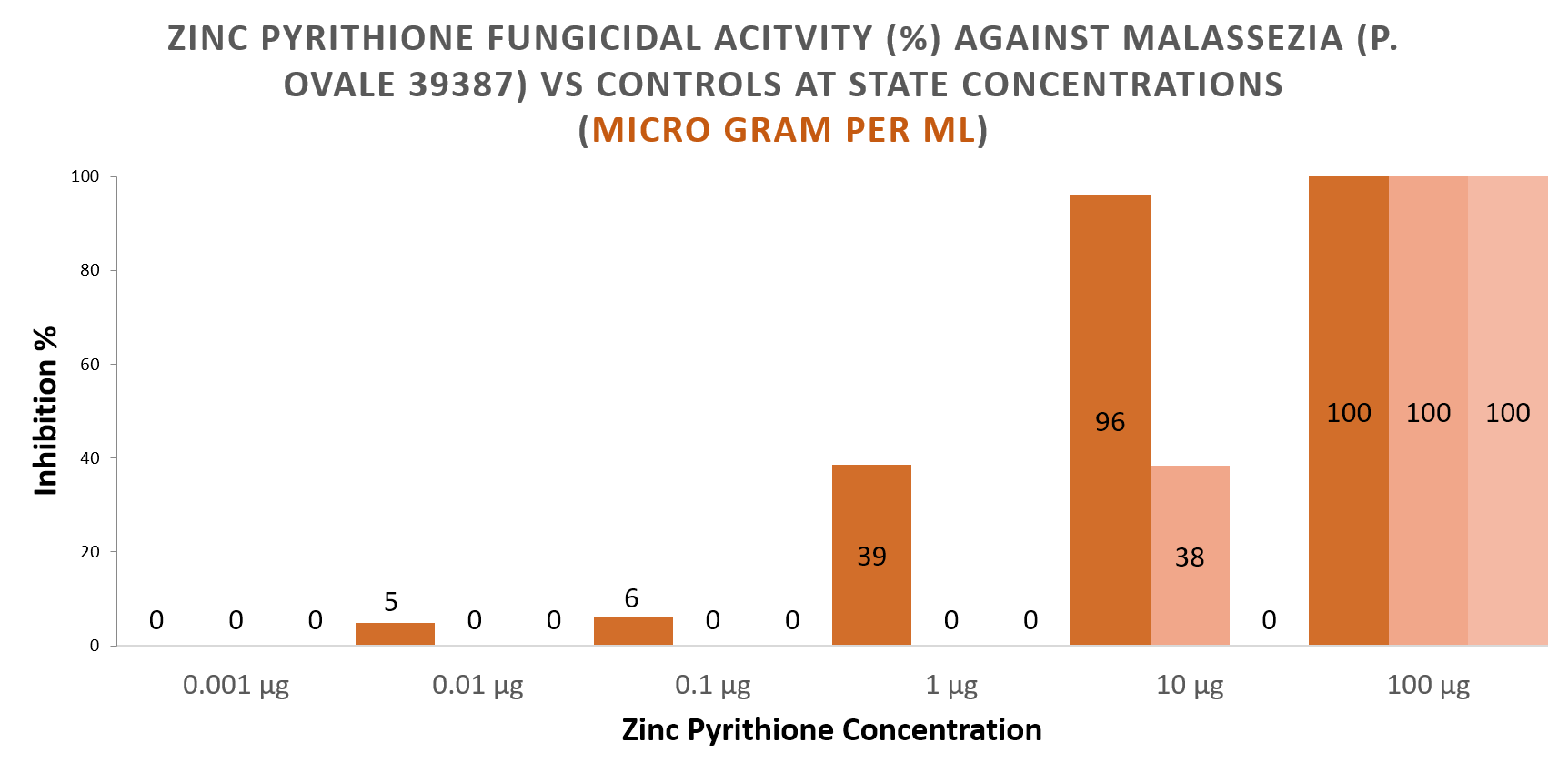
Why is suppressing malassezia so important? Research has revealed strong links between this fungus and various skin disorders. Reducing malassezia often leads to a noticeable improvement in symptoms.
Skin conditions often associated with malassezia include [2]:
- Seborrheic dermatitis and dandruff
- Pityriasis versicolor
- Atopic dermatitis
- Malassezia folliculitis
- Psoriasis
Therefore, most zinc pyrithione products aim to control malassezia levels on the skin, thereby addressing these related conditions.
In simple terms: Zinc pyrithione products work by reducing the amount of malassezia fungus on your skin, helping to clear up associated skin issues.
While malassezia suppression is the primary theory, researchers are exploring other possibilities. One study [3] suggests pyrithione zinc might disrupt keratinocyte genomic stability, potentially reducing keratin production. However, this is less widely accepted than the antifungal mechanism.
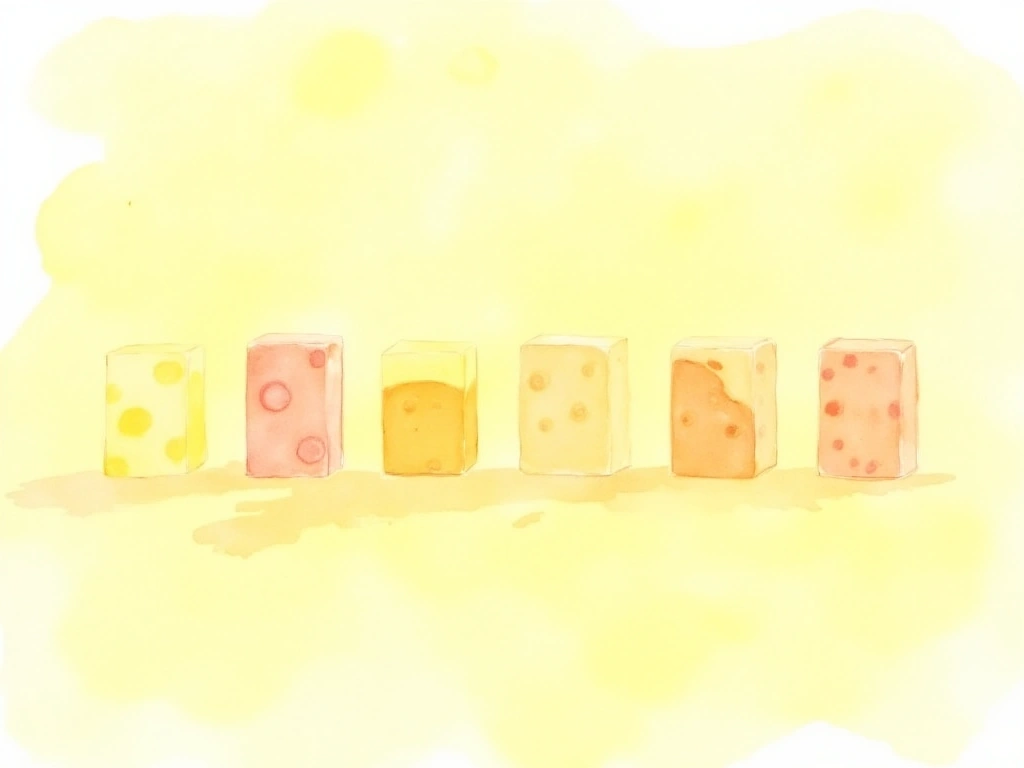
Zinc Pyrithione Soap Product Review: Top 5 Options
While zinc pyrithione shampoos are easy to find (think Head and Shoulders), soaps are less common and often require online or specialty store purchases.
This section reviews five of the most discussed zinc pyrithione soaps available.
Popular Choices, Not Exhaustive
This review covers notable options to give you a starting point, but it’s not a complete list of every zinc pyrithione soap on the market.
1. Noble Formula 2% Pyrithione Zinc Soap
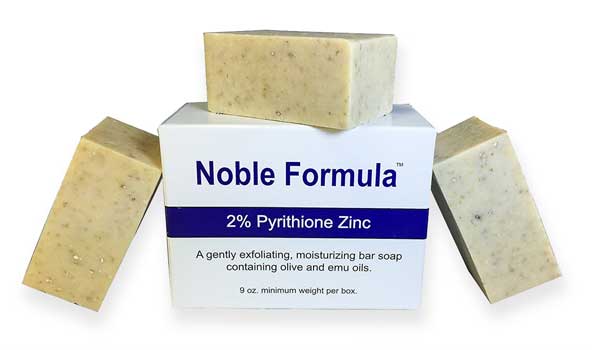
Noble Formula frequently tops “best of” lists and boasts impressive Amazon reviews (over 691 reviews, 4.3-star average at the time of writing). While popular, only around 60% of reviews are 5-star, suggesting mixed experiences.
Review Snapshot:
- Pros: Helpful for seborrheic dermatitis, acne, tinea versicolor, folliculitis (based on reviews).
- Cons: Some users report symptom return with continued use, can be drying and cause flakiness, some find the texture slimy with noticeable oatmeal pieces.
Points to Consider for All Zinc Pyrithione Soaps
Many observations about Noble Formula apply to other zinc pyrithione soaps as well, so this detailed discussion is broadly relevant.
The recurring theme in reviews is initial success followed by diminishing returns. Possible reasons for this reduced effectiveness over time include:
- Oleic Acid Release: Soap exposed to water and air might release oleic fatty acids, potentially counteracting benefits.
- Skin Microflora Shift: Changes in skin bacteria and fungi could reduce zinc pyrithione’s effectiveness.
These are speculations, highlighting the complexities of skin conditions and treatments.
Noble Formula Ingredients Breakdown
Made in the USA, Noble Formula emphasizes a minimal ingredient list:
Saponified Olive Oil (infused with Calendula), Saponified Emu Oil, Ground Oatmeal, and Pyrithione Zinc 2%.
Olive and emu oils form the soap base, oatmeal aims to soothe and protect, and pyrithione zinc is the active ingredient.
The choice of saponified olive oil (sodium olivate) is noteworthy. Olive oil is rich in oleic acid (up to 83%), the very fatty acid byproduct of malassezia linked to seborrheic dermatitis irritation.
While no studies directly link sodium olivate in soap to worsened skin conditions, using oils lower in oleic acid might be a better strategy.
Saponification Explained
Saponification is the chemical process of making soap. It involves breaking down fats or oils into fatty acids and glycerin, then binding the fatty acids with an alkali (like sodium hydroxide) to create soap.
Personal Experience with Noble Formula
Initial positive reviews led to trying Noble Formula. It worked quickly, clearing seborrheic dermatitis in days. However, after a few weeks, redness and flakiness returned.
Increasing contact time with the soap didn’t help, and continued use brought no improvement, leading to discontinuation.
Additional observations:
- Drying: Facial skin felt dry (common with bar soaps).
- Sun/Cold Sensitivity: Skin became more sensitive to sun and cold, possibly due to zinc pyrithione.
- Pale Skin Tone: Skin appeared paler.
A second attempt months later yielded the same pattern: initial clearing followed by symptom recurrence after a week or so.
2. DermaHarmony 2% Zinc Therapy Soap
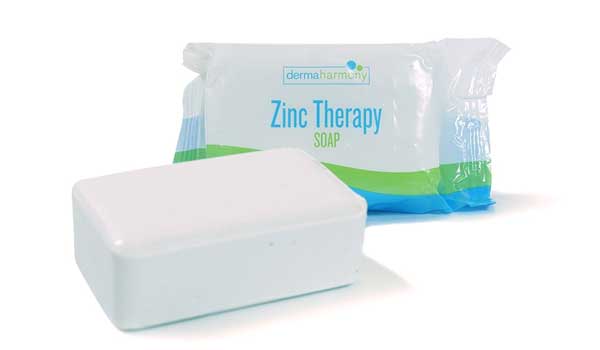
Another popular US-made option on Amazon, DermaHarmony has around 243 reviews and a 4.4-star average. Reviews echo those of Noble Formula, with similar pros and cons.
DermaHarmony Ingredients
DermaHarmony’s ingredient list is more extensive:
Saponified Oils (from palm and coconut), Water, Glycerin (from vegetable oil), Titanium Dioxide (a natural mineral), Oatmeal, Olive Oil, Vitamin E, Table Salt, Salt of Pentetic Acid, Zinc Pyrithione 2%.
Palm and coconut oils, lower in oleic acid, form the soap base, potentially avoiding the olive oil concern of Noble Formula. However, olive oil is still present further down the list.
Titanium dioxide likely serves as a whitening agent for visual appeal, not sun protection in this context.
Other notable ingredients:
- Vitamin E: An antioxidant beneficial for skin and product preservation.
- Salt of Pentetic Acid: Its role is unclear; limited information is available. Possibly a stabilizer or water softener.
- Table Salt: Likely for soap hardening.
- Glycerin: A common moisturizer in soaps.
Glycerin and vitamin E are positive additions compared to Noble Formula. Titanium dioxide and pentetic acid raise minor questions about necessity.
3. DermaZinc Zinc Therapy Soap
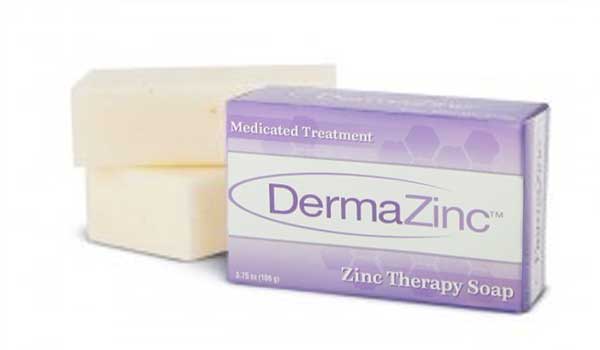
DermaZinc, also US-made, holds a 4.4-star average with over 216 Amazon reviews. Similar review patterns, though some users prefer it to Noble Formula for its smoother texture.
DermaZinc Ingredients
Ingredients list:
Palm Oil, coconut oil, deionized water, sodium hydroxide, glycerine, zinc oxide, organic oatmeal, shea butter, cocoa butter, olive oil, grapeseed oil, salt, vitamin E.
This appears to be a richer, more moisturizing soap than the previous two.
Zinc oxide is included, often used for diaper rash and sun protection. Here, it’s likely for visual whitening rather than therapeutic benefit.
4. Carbomed ZNP Soap
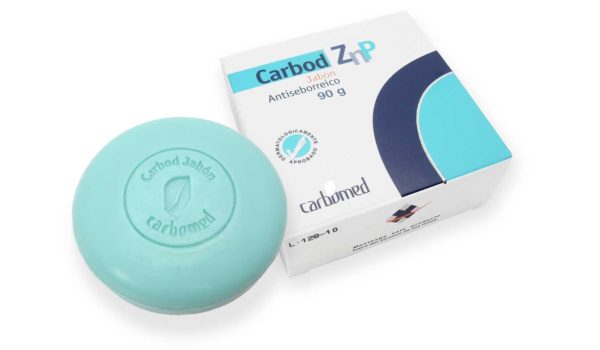
Less Amazon-popular, Carbomed ZNP is shipped from Paraguay, taking 3-6 weeks for delivery. Labeling is in Spanish. Despite lower popularity, it has a 4.3-star average from 78 reviews, with nearly 70% being 5-star.
Carbomed ZNP Ingredients
Extremely minimal ingredient list:
Linum Usitatissimun Seed Oil, Propilene Glicol and Pyrithione Zinc (translated to saponified flax seed oil, propylene glycol, and pyrithione zinc).
Flax seed oil is interesting and potentially less drying. High in ALA (omega-3, ~52%) and lower in oleic acid (~20%). ALA’s topical benefits for inflammatory skin conditions are documented [4].
Ingredient-wise, this looks promising. Vitamin E and vegetable glycerin (instead of propylene glycol) would be improvements. The soap’s blue color is unexplained by the listed ingredients.
5. Dermagor Gel Py-Zn Cleanser
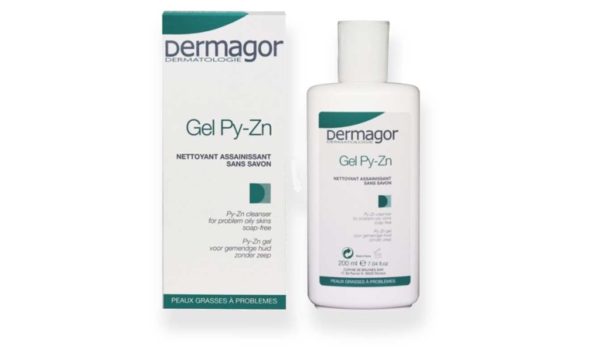
Technically a gel cleanser, not a soap. Virtually no Amazon reviews at the time of writing.
Made in France, it has [fairly positive reviews][3] on a French beauty review site. Reviews are similar to the soaps, but with unique points:
- Less drying than soap
- Skin feels tight after use
- Contains parabens
Included for comparison as cleansers can be less drying and gentler on skin pH than soaps [].
Dermagor Cleanser Ingredients
Longer ingredient list typical of cleansers:
Aqua, Sodium Laureth Sulfate, Lauryl Glucoside, Acrylates/Steareth 20, Methacrylate Copolymer, Zinc Pyrithione, Triethanolamine, Cocamide Dea, Laureth-2, Phenoxyethanol, Methylparaben, Ethylparaben, Propylparaben, Butylparaben, Edta, Parfum, Citral Hexyl Cinnamal, Limonene Linalool.
Detailed analysis of each ingredient is beyond this review.

Safety of Zinc Pyrithione
Zinc pyrithione is FDA-approved for cosmetic use as an antifungal agent at 0.3-2.0% concentrations. It generally has a good safety record with extensive testing.
Adverse reactions are uncommon but possible [5], including:
- Severe redness and inflammation
- Worsening of the skin condition
Studies indicate potential toxicity to human skin cells at higher concentrations [6]. Exceeding FDA-approved concentrations is likely to cause negative effects.
Always perform a patch test before using a new product. Apply a small amount to a hidden skin area and observe for reactions.

Zinc Pyrithione Soap: Key Takeaways
This article explored the science and product landscape of zinc pyrithione soap. Here are the main points:
- Zinc pyrithione is a well-studied antifungal, popular since the 1960s for its ability to combat malassezia fungus.
- Malassezia is a common fungus linked to skin conditions like seborrheic dermatitis, tinea versicolor, and pityriasis versicolor.
- Zinc pyrithione shampoos are common for dandruff, but soaps are less accessible, mainly found online.
- Noble Formula zinc pyrithione soap is a top Amazon seller with generally positive reviews, though some report reduced long-term effectiveness.
- Carbomed ZNP has a promising ingredient list, but its blue color and foreign origin raise minor considerations.
- Gentle cleansers with zinc pyrithione may be a favorable option for some due to potentially being less drying than soaps.
Hopefully, this guide provides a solid foundation for understanding and using pyrithione zinc soaps. If you have questions or personal experiences, please share in the comments below!
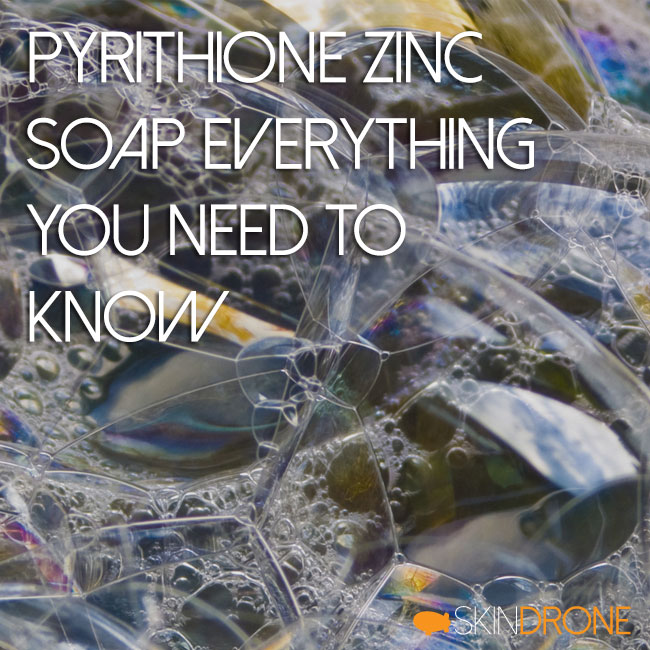
Have you researched the vanicream z-bar? I see it has stearic acid which also feeds melassazia… I’m trying to find out how much it has versus the amount of pryithione acid
Reply PermalinkHi Michael, Thank you so much for this write-up! I wondered if you have personal experience with the second product in your list, DermaHarmony, or what facial cleanser you are using today after some research and experimentation? Thank you again! Kimberly
Reply PermalinkPlease correct your misuse of the contraction"it’s" and the pronoun “its.”
Reply Permalinkthank you for your research and reporting of this darn condition!
Reply Permalinki will be attentive to your comments.
jim
I wonder if latest research in microbiol cleansers like the following will have significance to this condition.
http://www.ibn.a-star.edu.sg/research_project.php?projectid=353
Reply PermalinkGoodness gracious Wendy. The chap reasearches and writes an extensive article for public benefit and that’s all you can think to comment? Not even a “Thanks for the info…”.
Reply PermalinkHi folks. I’m David Addison, the owner of DermaHarmony. I have some thoughts on this review. If anyone has questions about why we use an ingredient or wants to discuss the safety of an ingredient, I’m highly available for such discussions – always.
Pentasodium pentetate (also known as Salt of Pentetic Acid) is a chelating agent used to bind and sequester metal ions. It’s added to help make more suds by overcoming water hardness. If you’re on well water with calcium or other minerals the DermaHarmony soap should function much better than Noble Formula. The Skin Deep database rates this as a safe ingredient. This is very common ingredient in soaps. By weight a bar contains less than 2/10th a percentage of this ingredient. At this level Pentasodium Pentetate is not an irritant.
The titanium dioxide is for aesthetic appearance. We use a non-nano particle titanium dioxide. It is also safe for lips and eyes. The mineral is processed to remove any impurities. Titanium dioxide is harmless and it cannot be absorbed through intact skin.
If you’re not happy with this soap, then try our African Black 2% Pyrithione Zinc Soap (you can find it on Amazon.com if you page down on our products). It’s one of 6 other pyrithione zinc bars that we make that are void of titanium dioxide and Salt of Pentetic Acid. Our African Black Soap base originates in Ghana. Black soap cleanses gently, so it’s ideal for people with SD, rosacea, rashes, dryness and other skin conditions. As a raw ingredient, it has a rich dark brown appearance. Black soap is made from locally harvested African plants such palm, coconut and shea butter. The ingredients are sun-dried and roasted, which is how it gets its deep brown (not black) color. Because Pyrithione Zinc is a fine white powder, our finished bars take on light purple/brown/black color. Ground apricot kernels add a wee bit of texture to aid exfoliation. The African Black soap ingredients super natural: Glycerin, Saphonified Oils (from palm and coconut), Water, Sodium Oleate, Pyrithione Zinc, Shea Butter, Sodium Cocoate, Sodium Palm Kernelate, Ground Apricot Kernel, Salt, Sodium Citrate, Citric Acid.
Noble make a solid product – it would be wrong to say otherwise.
The DermaHarmony bar is an FDA registered OTC drug which means that we’ve jumped thorough more regulatory hoops and safeguards. Our bar costs more to produce and sells for less than Noble Formula. I would have NOT rated the DermaHarmony bar as #2, but that’s personal choice. I’m biased a wee bit.
Reply PermalinkHi Kimberly, Thanks for checking-ing and my apologies for the astronomically long respone time. Haven’t actually tried the DermaHarmony formula, but if you’re still searching, it founder/owner of the company has recently chimed in on the conversation and perhaps you may be able to ask him directly.
Myself, have ditched cleansers altogether and have more simply stuck to simple cold water facial rinses instead. Hard to say how applicable such an approach would be if makeup needs removal though.

Reply PermalinkHi Michael,
Do you know much about the zinc pyrithione soap from clever soap? It’s the only one I can find made in the U.K. and is much cheaper than the others, I just wondered if it’s any good?
Thanks
Reply PermalinkHi Sue,
The Vanicream bar looks great and should be added to the master list. Based on the ingredients, would actually put it in first place. Don’t think the stearic acid would cause any issues when combined with zinc pyrithione. The actual cleansing agents used in this bar are currently considered the most gentle/mild options available (similar to Cetaphils cleansing bars).
Thanks for bringing it to my attention.
Reply PermalinkHi Rich,
Overall wouldn’t say it’s much different than the majority of the zinc pyrithione bars available. However, the Vanicream mentioned by Sue earlier in this discussion is likely to be a significantly better choice (due to the better choice of surfactants used).
For reference, here are the ingredients of the Vanicream bar:
sodium cocoyl isethionate, stearic acid, sodium stearate, water, sodium lauroyl sarcosinate, paraffin, petrolatum, sorbitol, cetearyl alcohol, propanediol, ceteareth-20, simethicone, glyceryl stearate, PEG-30 stearate, sorbic acid
And it’s currently listed on Amazon.co.uk for £9.95, so perhaps it may be worth a look.
Hope that helps.
Reply PermalinkAll the best.